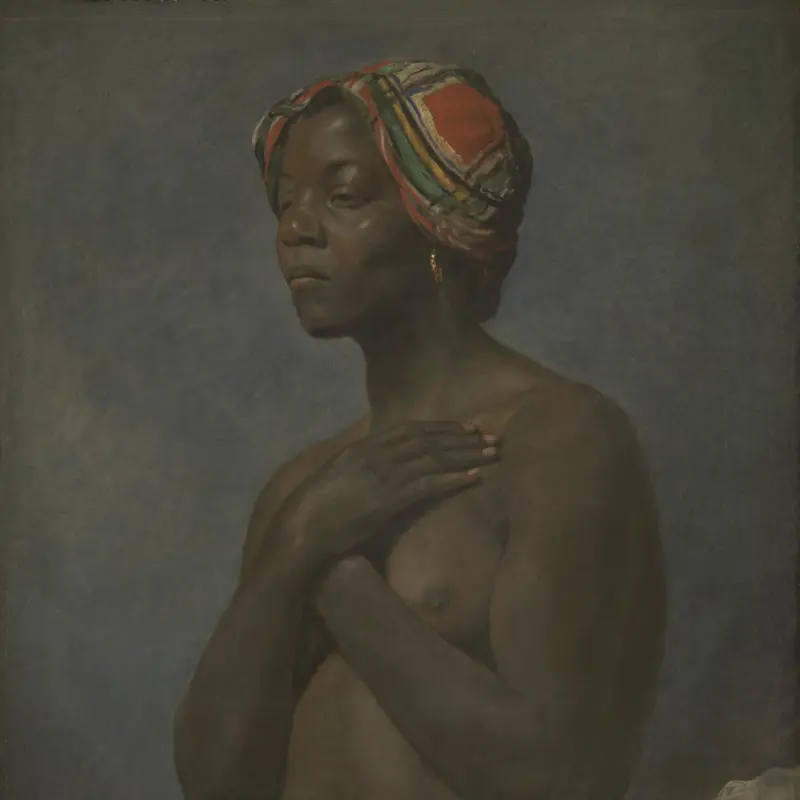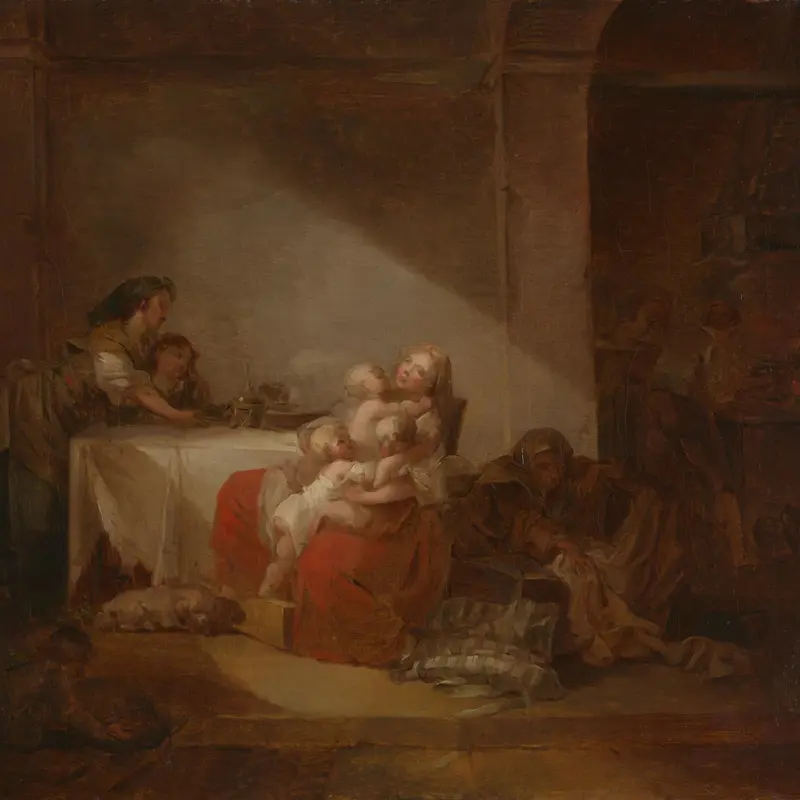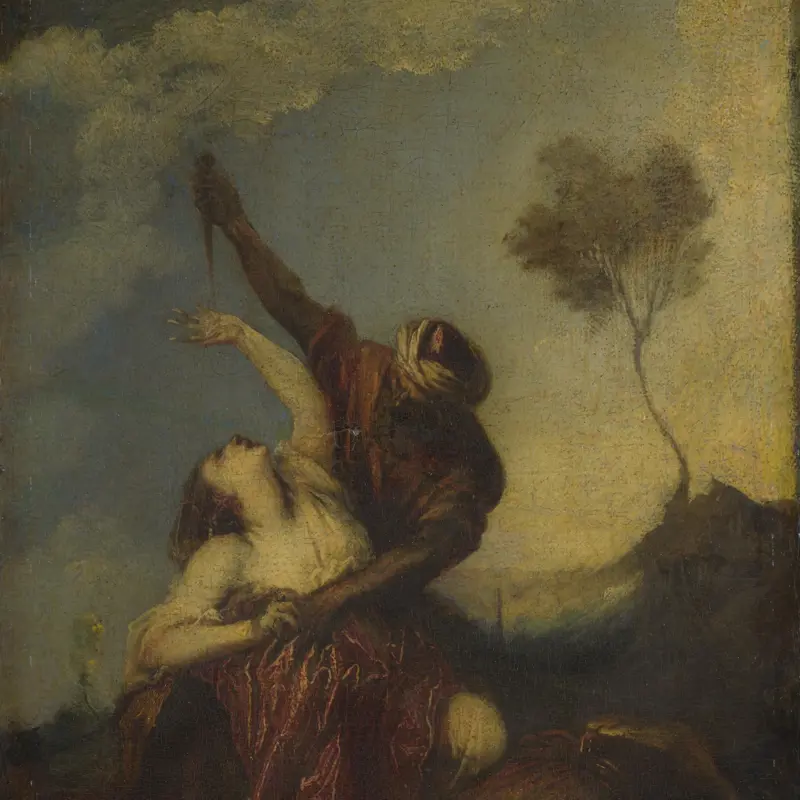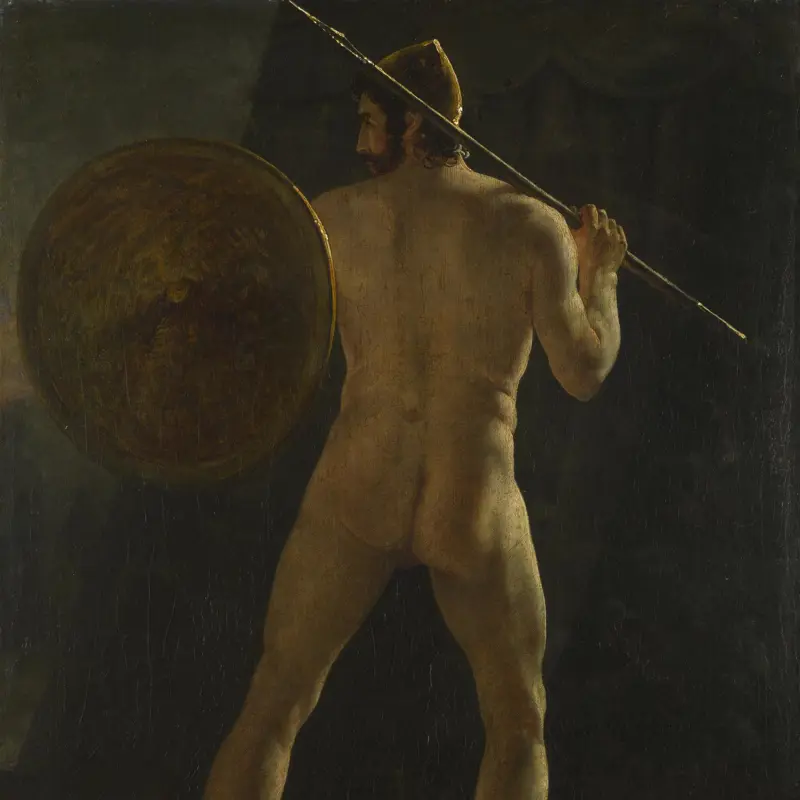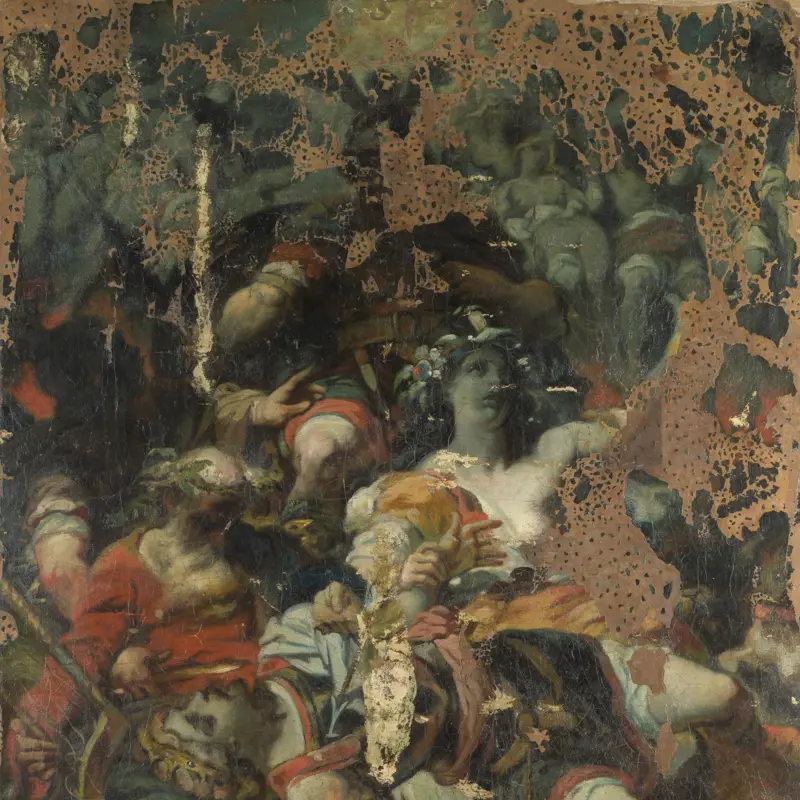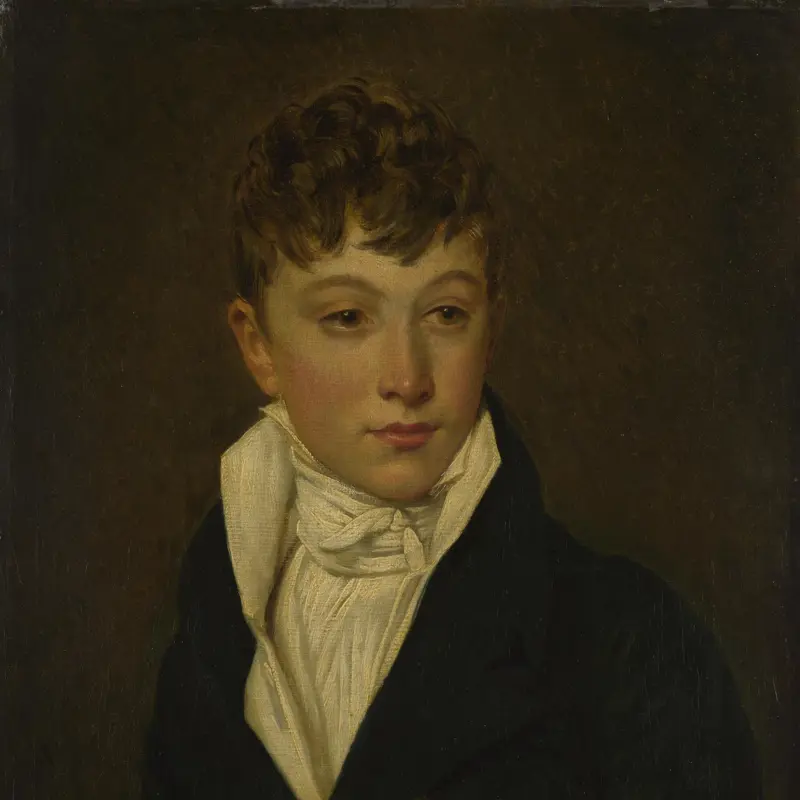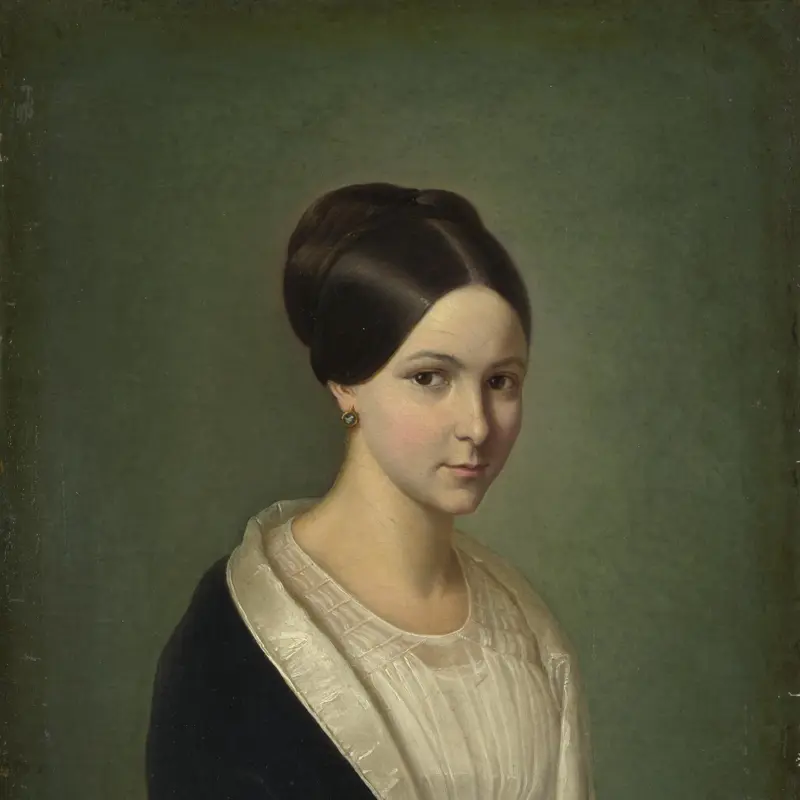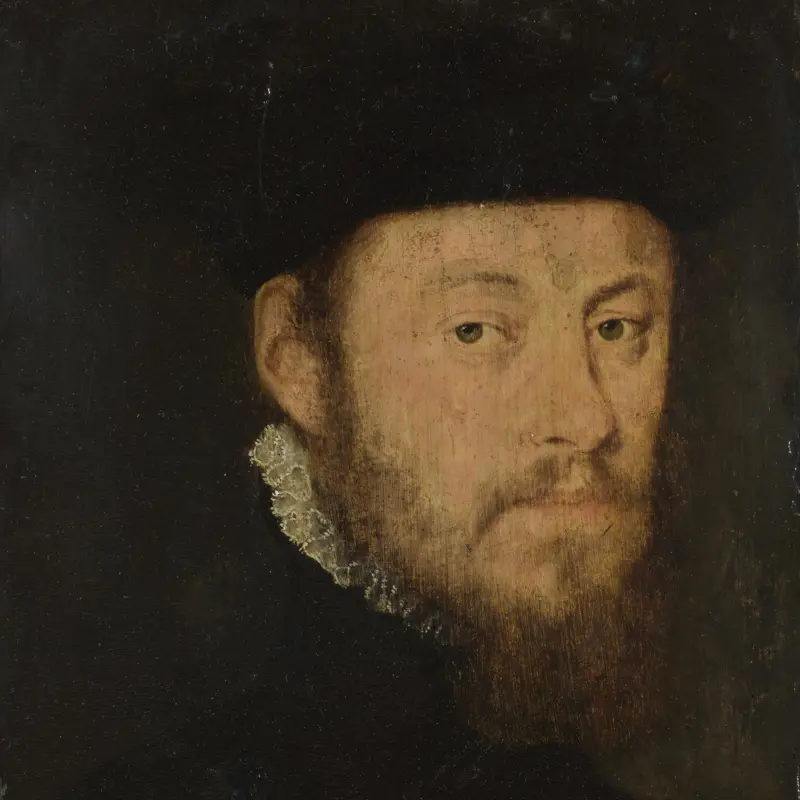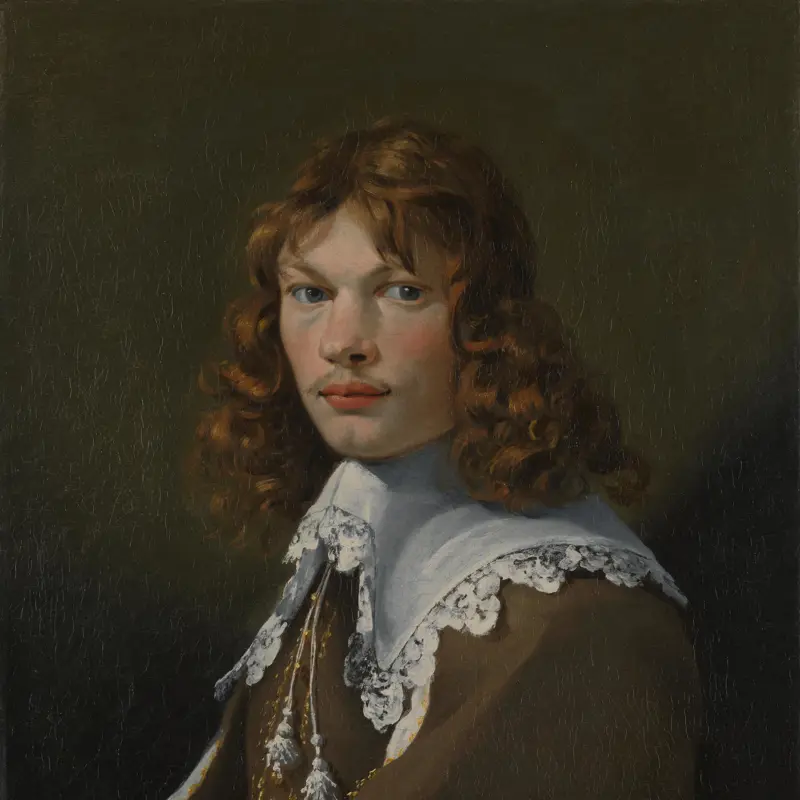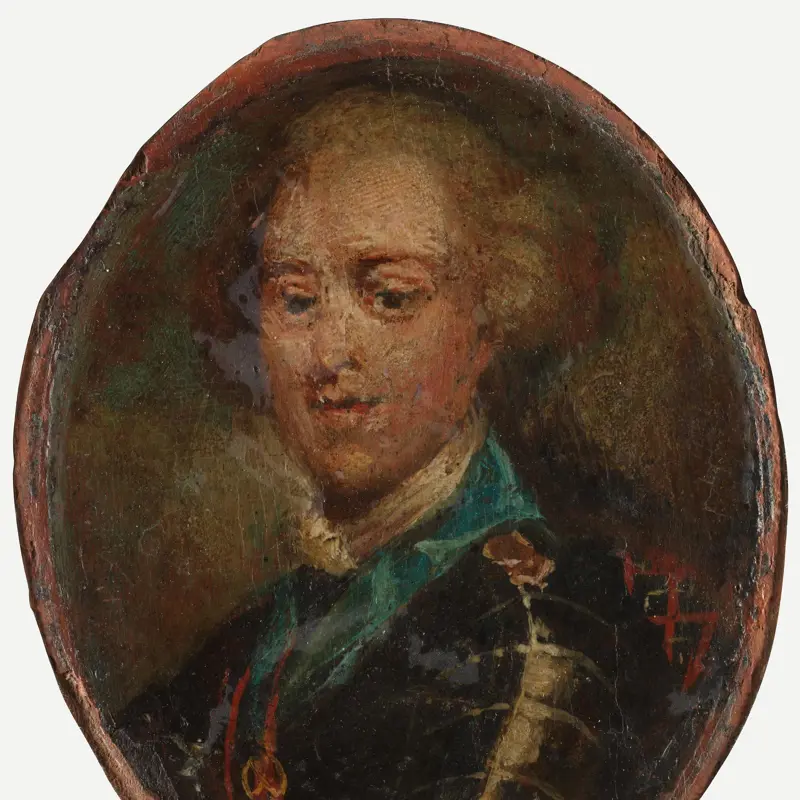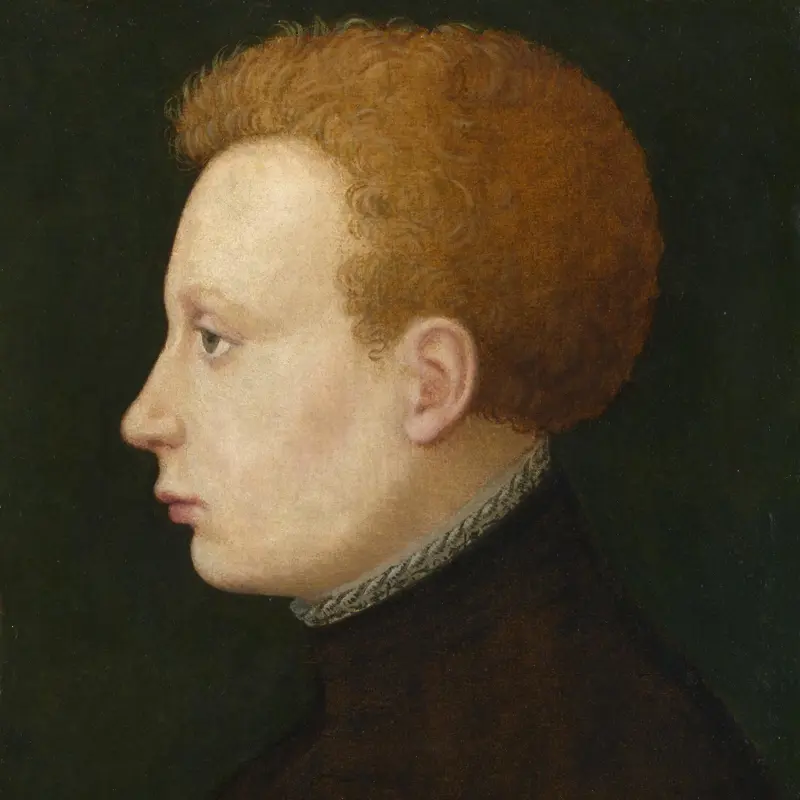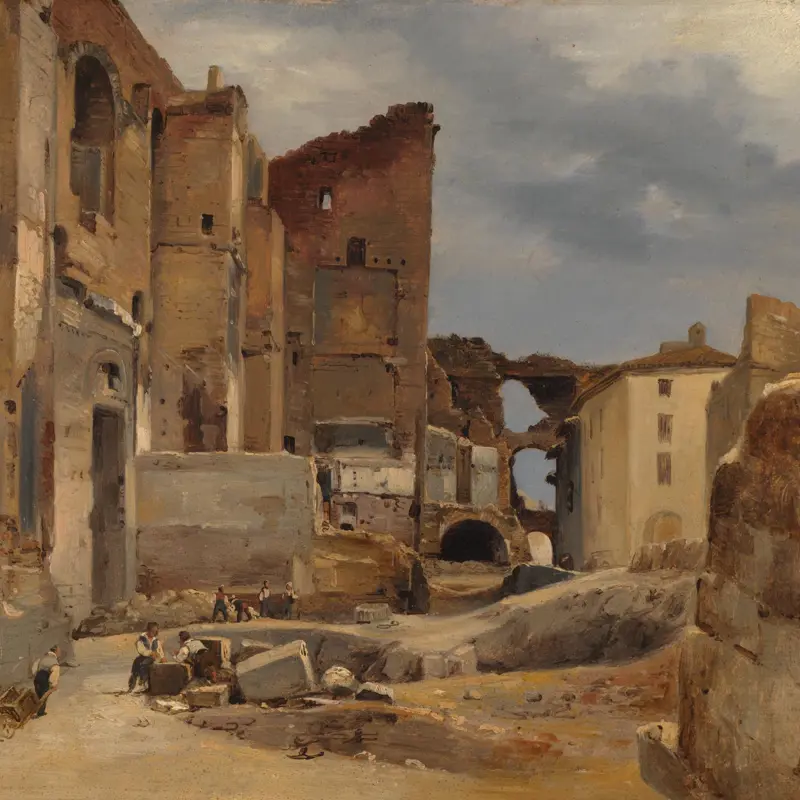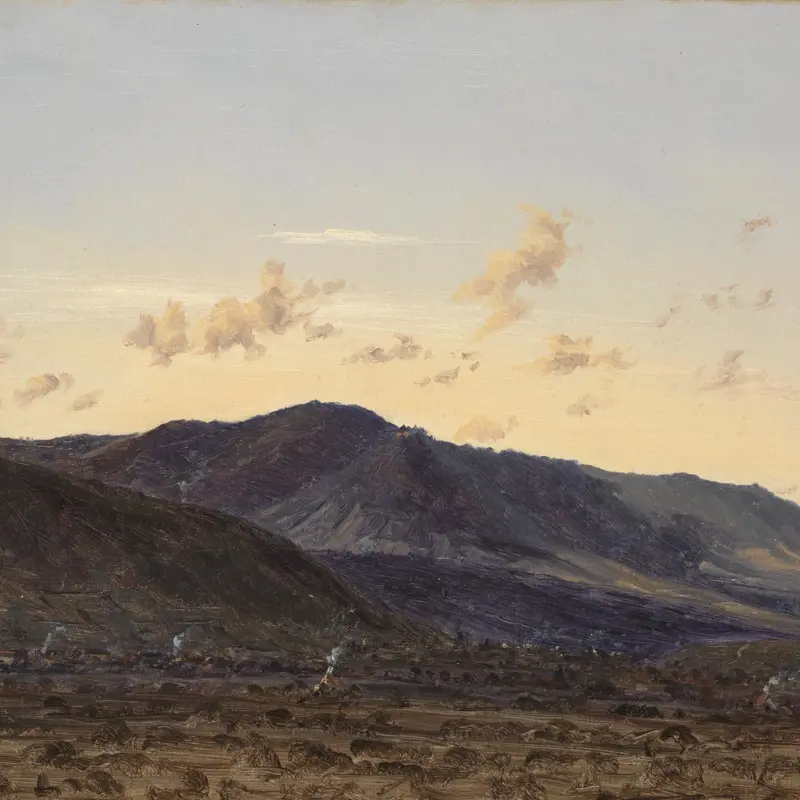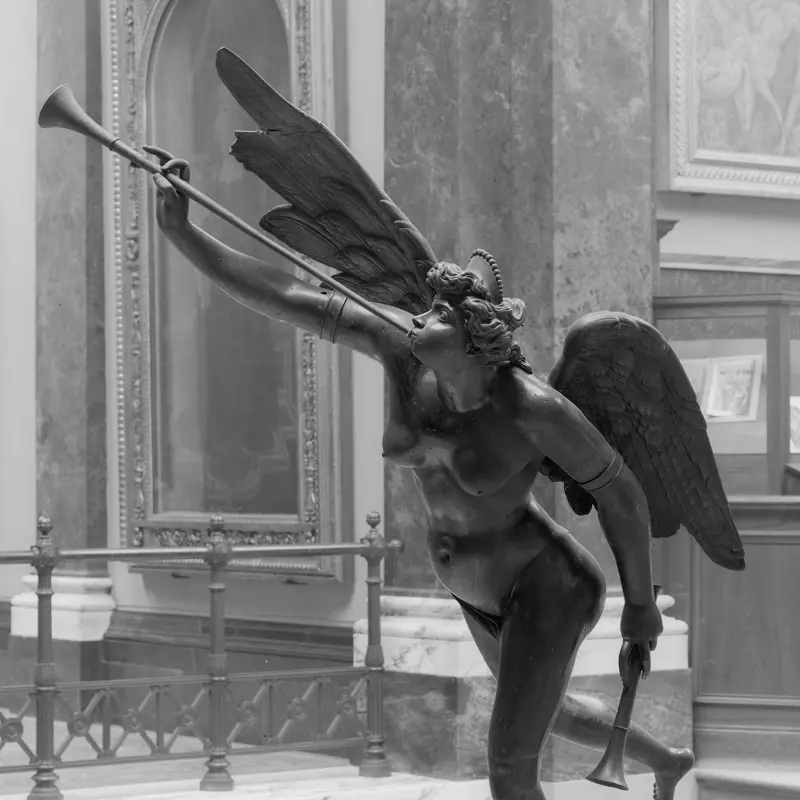French, 'Portrait of a Man (Victor Considerant?)', after 1830
About the work
Overview
This small portrait was attributed to the French Romantic painter Eugène Delacroix (1798–1863) when it was presented to the Tate Gallery by the British artist Walter Sickert in 1922. However, this attribution is now rejected on stylistic grounds. The sitter is traditionally identified as the French social reformer Victor Considerant (1808–1893). The broad face, hairstyle and drooping moustache can be seen in other confirmed portraits of him.
Considerant was a utopian socialist and a follower of Charles Fourier (1772–1837). He played an important role in the founding of the Fourierist movement, including establishing a colony in Texas in the mid-1850s based upon Fourier’s ideas, and in the promotion of socialist journalism and writing. His most important works include the three-volume La Destinée sociale (1834–44) and Principles of Socialism: Manifesto of 19th Century Democracy (1843). He is credited with defining concepts such as the right to work, direct democracy and proportional representation.
Key facts
Details
- Full title
- Portrait of a Man (Victor Considerant?)
- Artist
- French
- Date made
- after 1830
- Medium and support
- oil on canvas
- Dimensions
- 28.5 × 22 cm
- Acquisition credit
- Presented by Walter Sickert to the Tate Gallery, 1922; transferred, 1956
- Inventory number
- NG3686
- Location
- Not on display
- Collection
- Main Collection
Provenance
Additional information
Text extracted from the ‘Provenance’ section of the catalogue entry in Martin Davies, with additions and some revisions by Cecil Gould, ‘National Gallery Catalogues: French School: Early 19th Century, Impressionists, Post-Impressionists, etc.’, London 1970; for further information, see the full catalogue entry.
Exhibition history
-
2010Close Examination: Fakes, Mistakes and DiscoveriesThe National Gallery (London)30 June 2010 - 12 September 2010
Bibliography
-
1957Martin Davies, National Gallery Catalogues: French School, 2nd edn (revised), London 1957
-
1970Davies, Martin, and Cecil Gould, National Gallery Catalogues: French School: Early 19th Century, Impressionists, Post-Impressionists etc., London 1970
-
2001
C. Baker and T. Henry, The National Gallery: Complete Illustrated Catalogue, London 2001
About this record
If you know more about this work or have spotted an error, please contact us. Please note that exhibition histories are listed from 2009 onwards. Bibliographies may not be complete; more comprehensive information is available in the National Gallery Library.

